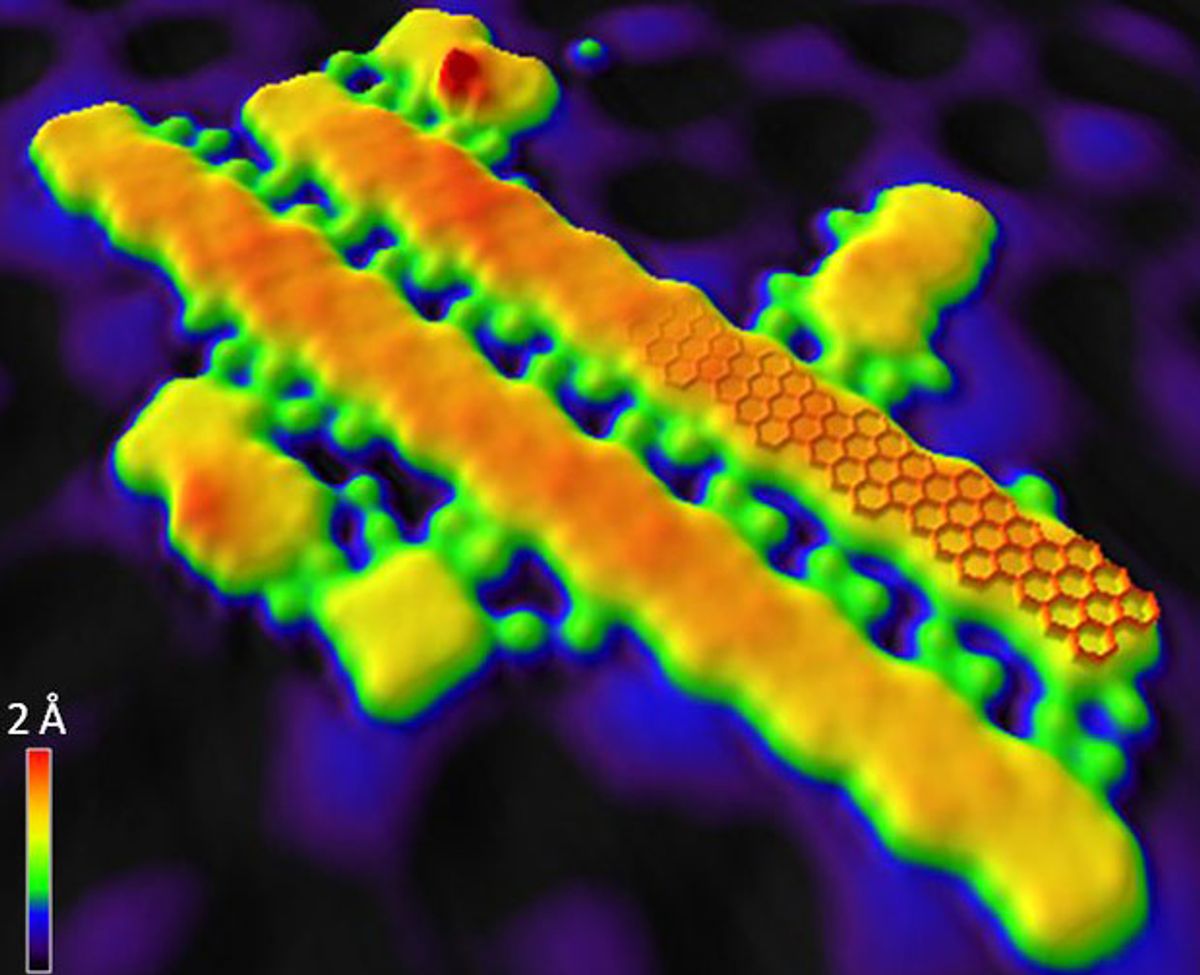Not all graphene is alike. The way in which graphene is produced determines in large measure how it can be applied. The aim, of course, has been to produce the best quality graphene in large quantities.
However, these bulk production methods come at a price, which usually involves compromising those astounding electronic properties that make graphene so attractive in the first place.
Now researchers at the University of California Los Angeles (UCLA) and Tohoku University in Japan may have found a way around these limitations by abandoning “top-down” manufacturing techniques like lithography for a bottom-up approach in which the graphene nanoribbons self assemble exactly into the desired form.
The researchers were looking for a way to produce graphene nanoribbons that have the zigzag edges that give the material a strong magnetic property, making it attractive for spintronics. Spintronics exploits the way in which the spin of particles respond to magnetic fields so that the spin is either parallel or antiparallel to the magnetic field. These two possibilities make it useful for creating a digital signal that can be used in computing.
“To make devices out of graphene, we need to control its geometric and electronic structures,” said Paul Weiss of UCLA in a press release. “Making zigzag edges does both of these simultaneously, as there are some special properties of graphene nanoribbons with zigzag edges. Having these in hand will enable us to test theoretical predictions about them, such as magnetic properties.”
The typical lithographic method for producing graphene nanoribbons with these zigzag edges resulted in too many defects in the final product for the material to be useful.
In the research, which was published in the journal ACS Nano, the team exploited the properties of a copper substrate to alter the way the graphene precursor molecules reacted to each other as they assembled into graphene nanoribbons. With this method, the researchers were able to control the length, edge configuration, and location of the nanoribbons on the substrate.
This isn’t the first time that graphene nanoribbons were produced by self-assembly, but in earlier efforts the end results were bundles of ribbons that needed to go through another process to untangle them and position them in a device.
“Previous strategies in bottom-up molecular assemblies used inert substrates, such as gold or silver, to give molecules a lot of freedom to diffuse and react on the surface,” said Patrick Han of Tohoku University in the press release. “But this also means that the way these molecules assemble is completely determined by the intermolecular forces and by the molecular chemistry. Our method opens the possibility for self-assembling single-graphene devices at desired locations, because of the length and the direction control.”
Dexter Johnson is a contributing editor at IEEE Spectrum, with a focus on nanotechnology.



